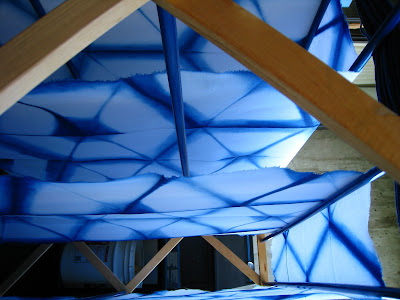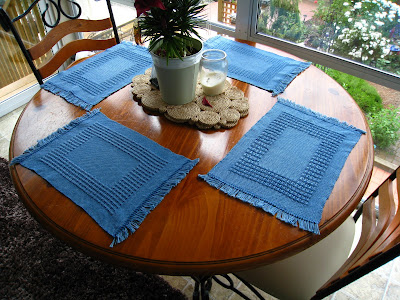This past summer I was absolutely enchanted by a weaving pattern that resulted from using the cornucopia tool in Weavemaker, a program used to design weaving patterns. Cornucopia can be used anywhere within the pattern: on the treadling, the threading, the colours or the tie-up and the results can range from awful to fabulous! I warped up with the Perwinkle pattern from A Handweaver's Pattern Book and used the cornucopia tool in the treadling section until I got the awesome pattern shown below.
For my final project in Surface Design I used the print out of the pattern, which appears as a geometric rendering of the weaving structure, and transferred the three resulting images to silkscreens using Photoshop and a scanner.
I screenprinted the yardage in an ombré colour palette that began with burnt umber and transitions through burnt sienna, raw sienna and ended with yellow ochre.
The reason that I love this pattern so much is that the repeat structure is deceptive. At first glance it appears to be a simple, diamond-shaped repeat structure of two motifs, but there are actually eight unique diamond repeats within this structure that are randomized within the pattern to create sixteen different repeats.
The image above was taken after heatsetting the yardage first in the dryer for 2 hours and then with a heat press.
Unfortunately, I was inconsistent with the heat pressing, despite my thinking that I was being so methodical, and after I washed the fabric there are some pretty obvious areas of wash out. Luckily, part of the criteria of this project was to layer silkscreening and embellisment techniques, so I have begun to cover the washed out areas with a four-sided embroidery stitch that makes the mistakes look like intentional design components....sort of.









































